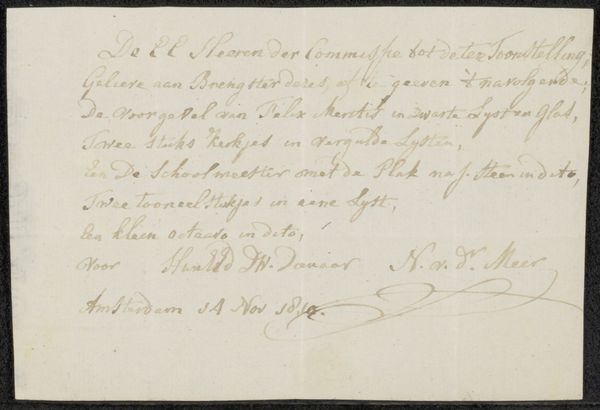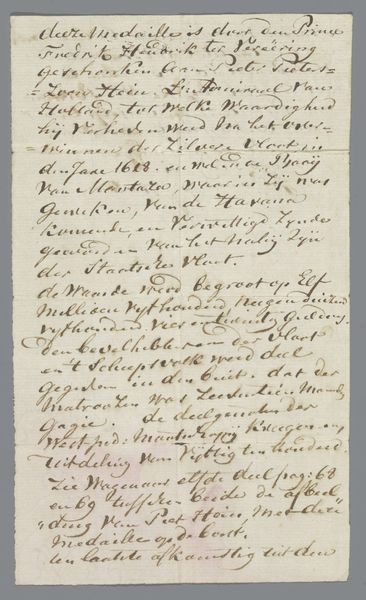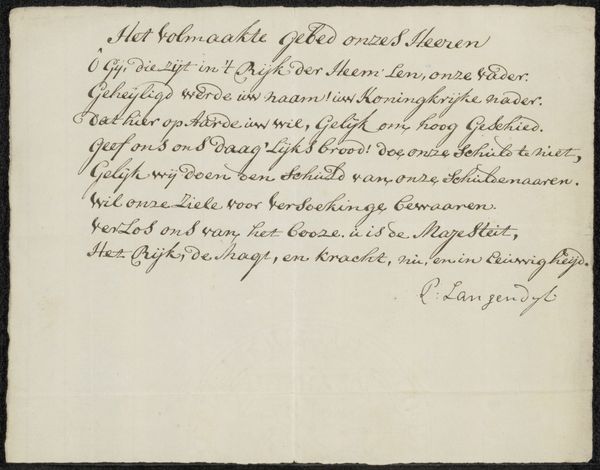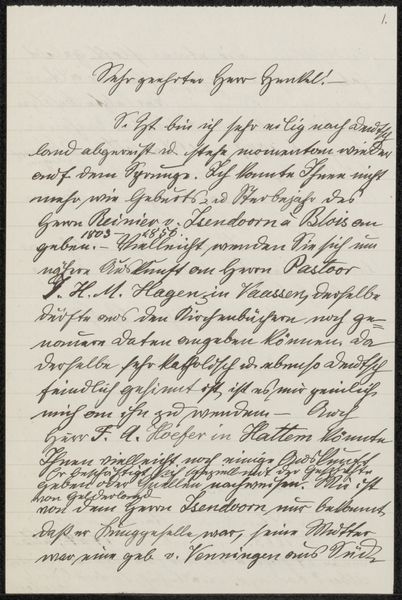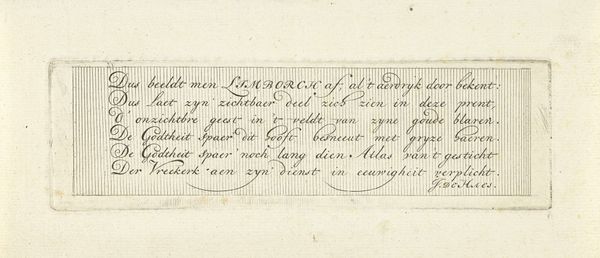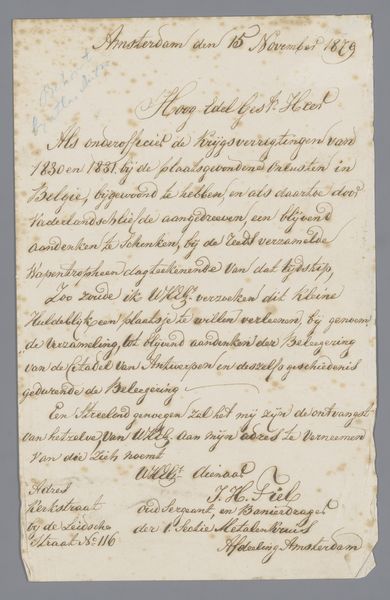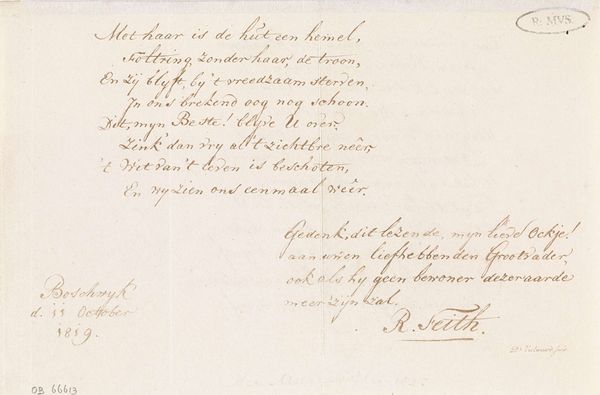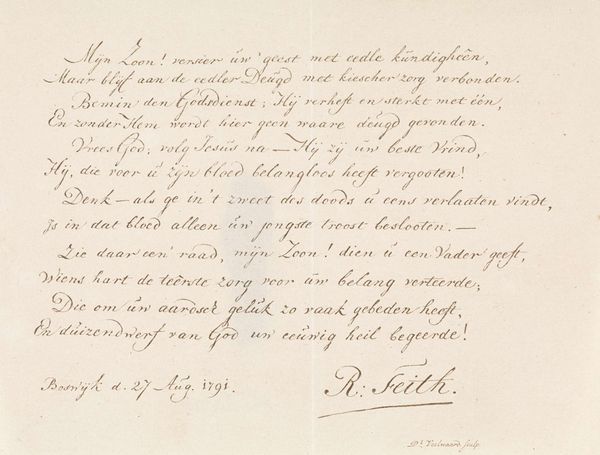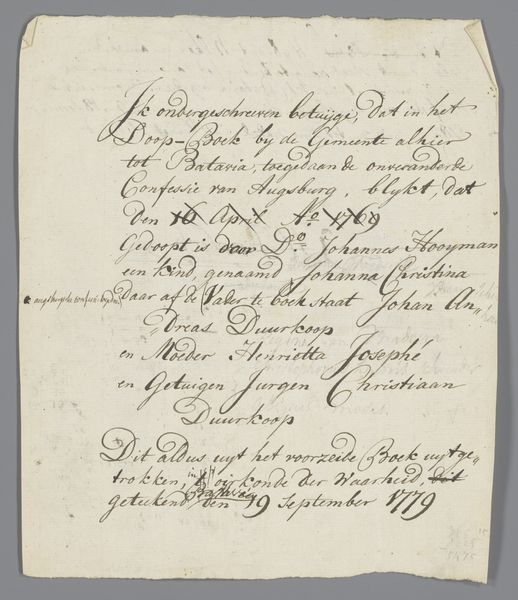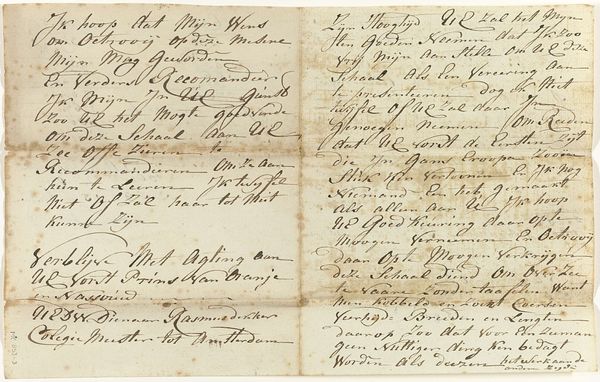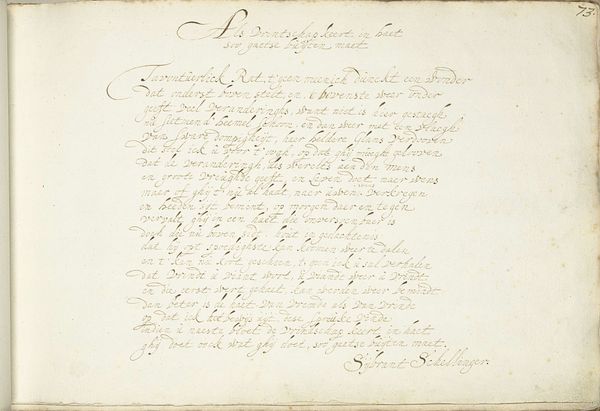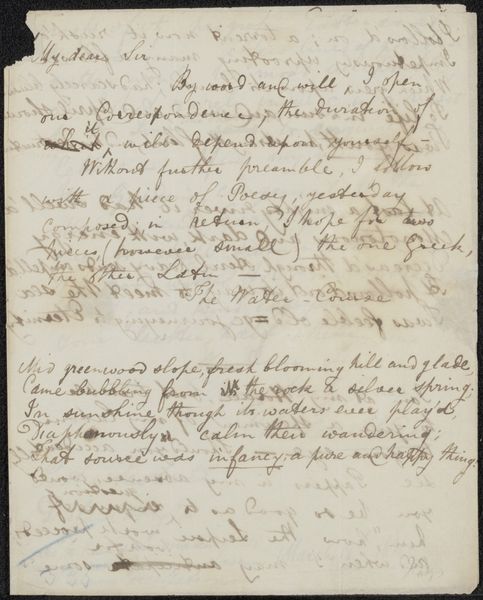
drawing, print, paper, ink
#
script typeface
#
drawing
#
script typography
#
hand-lettering
#
narrative-art
#
baroque
# print
#
hand drawn type
#
hand lettering
#
paper
#
ink
#
hand-drawn typeface
#
thick font
#
handwritten font
#
golden font
#
calligraphy
#
small lettering
Dimensions: height 96 mm, width 197 mm
Copyright: Rijks Museum: Open Domain
Curator: Here, we have Lucas Pater’s “Handgeschreven onderschrift voor prent 'De dood van Dido'” from 1758. It appears to be ink on paper, a handwritten caption for a print depicting the death of Dido. What strikes you initially? Editor: The sheer delicacy. It's such fine lettering, almost like lace. It gives the text itself an ephemeral, precious quality, fitting for the tragic scene it describes. It emphasizes the craft of writing and making the written object, connecting the act to skill, to hours, and, if someone commissions it, money. Curator: Indeed. Let’s contextualize this. The text narrates Dido's death, a central event in Virgil’s "Aeneid," exploring themes of love, betrayal, and fate. The artwork emerges from a broader European obsession with classical narratives during the Baroque period, though this example is expressed with Netherlandish flair. How does it fit into contemporary conversations about these epic themes? Editor: I find myself wondering about the production process of writing versus that of printing at this time. Someone drew or wrote this to function as an *underscoring* for the Dido print – almost like emphasizing an instruction, giving a frame of reference. This wasn’t mechanically reproduced in its initial stage; someone labored to hand-produce this particular iteration. The texture, created by ink and pressure from a specific pen nib dragged across this specific paper, tells a story of its making. Curator: Exactly! The intersectionality between text, image, and intended viewer seems so crucial. Dido's suicide is a pivotal moment. Seen through a feminist lens, is she a victim of Aeneas's betrayal and patriarchal power structures, or is she empowered in her tragic self-determination? Editor: Those readings coexist, right? The materials ground us: ink, paper, hand-lettering – a physical manifestation of someone’s emotion translated into carefully crafted script. The production echoes themes of emotional labor. What are we really consuming here? Virgil's story of war and patriarchal structures and also the physical labor to render this description to underscore another work of art. Curator: Looking closely, you see this ornate, Baroque style of handwriting as a way of encoding power, skill, even education itself. This caption might shape and filter how the viewers engage with it, both then and today. Editor: Ultimately, this caption reminds us that every image has a support system, whether it's literally the paper underneath, a cultural historical story to underscore its meaning, or even the hands and means required for its production and distribution. All works are the sum of labor practices. Curator: Indeed, considering Dido's plight, and her story being used across history as both tragic love and an appeal to the danger of foreign men, maybe seeing the means behind the image gives more dimension and more possibility for our contemporary interpretations.
Comments
No comments
Be the first to comment and join the conversation on the ultimate creative platform.
